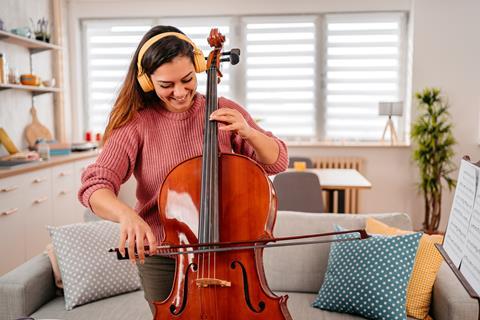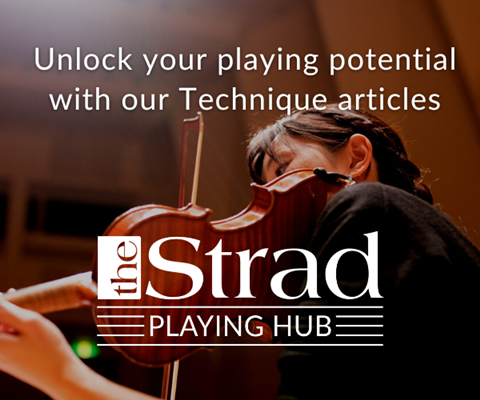The violinist’s second instalment in a three-part series examines ways to inject a sense of fun in practice sessions

Read more student and player guides in our Education Hub
How did we get so serious? In classical music, it seems to come with the territory. All-black clothing, expensive equipment, analytical studies and the quest for excellence has led to some very, VERY serious practice. Scientists are clear about the data, however: a playful approach makes any endeavour easier, more enjoyable, and more likely to be repeated in the future. In other words, ’play’ is the perfect approach for practice. According to research, play for adults is not trivial fluff. It stimulates the imagination and relaxes the body - good news for our technique. Play is kindling for our passion. Play encourages curiosity, it allows us to explore within practice rather than to endlessly repeat. Most importantly, it can imbue our most daring and difficult tasks with a sense of lightheartedness. Engaging in play allows us to dig deep without feeling overwhelmed. It invites us to be patient.
What are aspects of a playful approach? Play has one or more of the following characteristics:
1) an element of surprise
2) a sense of humour
3) a challenge
4) some friendly competition
5) an element of spontaneity
Tips for Cultivating Play in Practice
Incorporate goof-off time in practice
Let the last ten minutes of your practice be devoted to any fun jamming or run-throughs of old rep you love. We tend to remember experiences by how we end them, so the timing of goof-off time is key to help us feel positive about practice.
Use a randomiser app like Daily Decision
This can help you decide which scales to play or to be presented with particular practice challenges you program into the app (like ’get to the frog as often as you can’).
Play with virtual accompaniment
Example include Tomplay.com or play along with YouTube to have your own back up orchestra. The trick here is to use different performers, not just one, and to use the custom speed tool in the settings to stay within your comfort zone. Hook up a speaker for that surround sound feeling.
Make a Zoom practice date
Meet a friend to practise (muted) side by side, followed by a happy hour. It’s work + fun together, all by opening your laptop.
Use apps to help gamify learning rhythms
For iOS there is an app called Rhythm Sightreading Trainer, for Android use an app like Rhythm Trainer. It’s highly addictive and develops rhythm reading skills.
Pick a practice theme for the day to lighten your work and spur curiosity
For example, ’backwards day’ could be a day when you practise all your hard licks backwards, i.e. right to left. ’Dancing Day’ means you move around like crazy. Think of themes that address your to-do list, but in a fun way.
Use timers
Make sure you are moving on and not practising something into the ground. When time’s up, move on!
Leave practice
Finish practising when you are feeling good about it, not when you are totally frustrated. Again, studies have proven that the way we feel about an experience is highly dependent on how that experience ended. Don’t overstay your welcome.
Susanna Klein, associate professor of violin at Virginia Commonwealth University, is the author of thePractizma Practice Journal and the Practice Blitz YouTube Channel. Her research focuses on finding ways to make practice more delightful and insightful.
Read: Top tips for putting the joy into practice
Read: Repetitive practice: Once more, with feeling
Read: Products December 2021: Clipza video recording app
Read more student and player guides in our Education Hub












































No comments yet